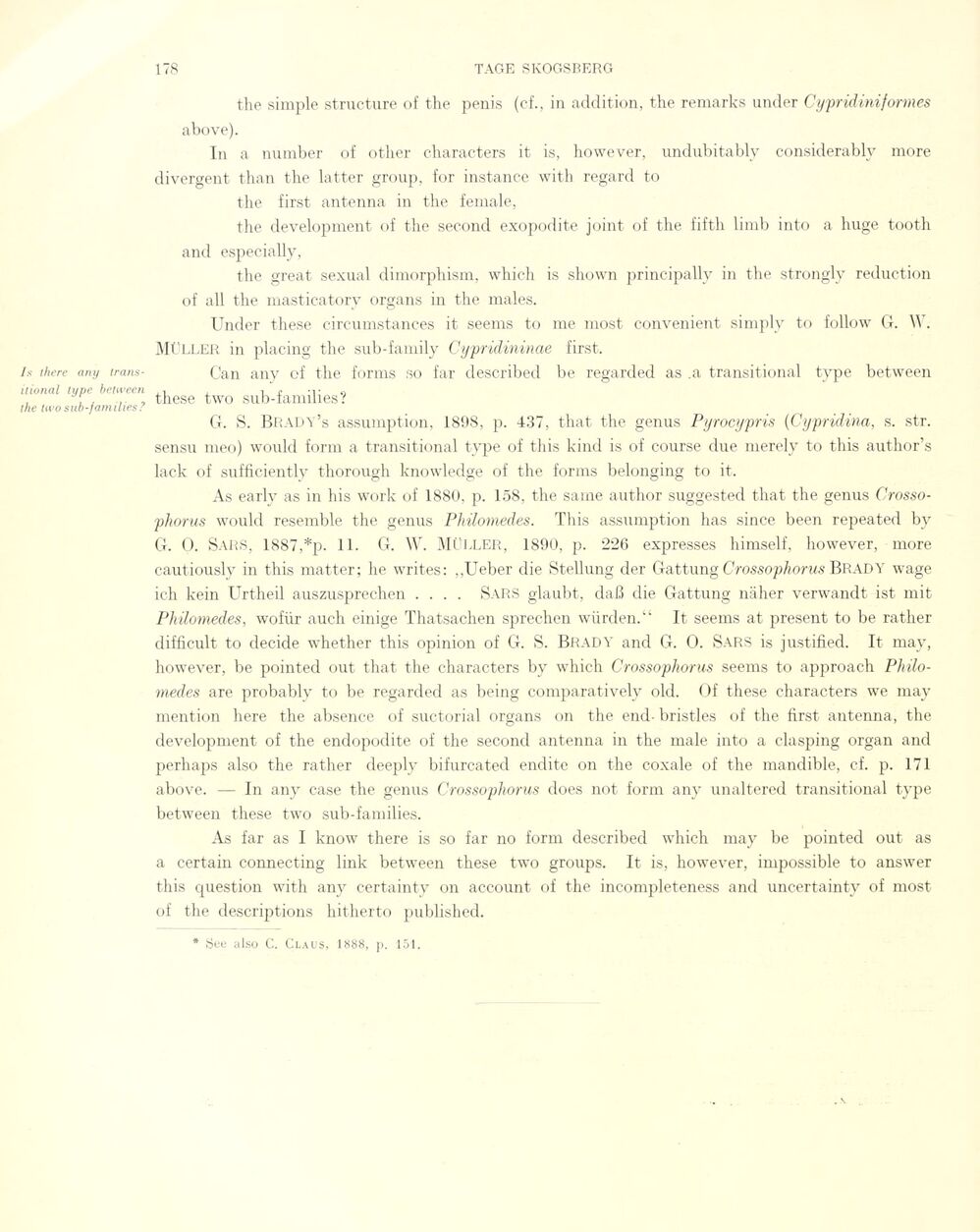
Full resolution (JPEG) - On this page / på denna sida - Sidor ...

<< prev. page << föreg. sida << >> nästa sida >> next page >>
Below is the raw OCR text
from the above scanned image.
Do you see an error? Proofread the page now!
Här nedan syns maskintolkade texten från faksimilbilden ovan.
Ser du något fel? Korrekturläs sidan nu!
This page has never been proofread. / Denna sida har aldrig korrekturlästs.
Is there any
transitional type between
the two sub-families?
the simple structure of the penis (cf., in addition, the remarks under Cypridiniformes
above).
In a number of other characters it is, however, undubitably considerably more
divergent than the latter group, for instance with regard to
the first antenna in the female,
the development of the second exopodite joint of the fifth limb into a huge tooth
and especially,
the great sexual dimorphism, which is shown principally in the strongly réduction
of all the masticatory organs in the males.
Under these circumstances it seems to me most convenient simply to follow G. W.
Müll .er in placing the sub-family Cypridininae first.
Can any of the forms so far described be regarded as .a transitional type between
these two sub-families?
G. S. Brady’s assumption, 1898, p. 437, that the genus Pyrocypris (Cypridina, s. str.
sensu meo) would form a transitional type of this kind is of course due merely to this author’s
lack of sufficiently thorough knowledge of the forms belonging to it.
As early as in his work of 1880, p. 158, the same author suggested that the genus
Crosso-phorus would resemble the genus Philomedes. This assumption has since been repeated by
G. O. Sars, 1887,*p. 11. G. W. Mui.LER, 1890, jr. 226 expresses himself, however, more
cautiously in this matter; he writes: „Ueber die Stellung der Gattung Crossophorus Rrady wage
ich kein Urtheil auszusprechen .... Sars glaubt, daß die Gattung näher verwandt ist mit
Philomedes, wofür auch einige Thatsachen sprechen würden.“ It seems at present to be rather
difficult to decide whether this opinion of G. S. BRADY and G. O. Sars is justified. It may,
however, be pointed out that the characters by which Crossophorus seems to approach
Philomedes are probably to be regarded as being comparatively old. Of these characters we may
mention here the absence of suctorial organs on the end- bristles of the first antenna, the
development of the endopodite of the second antenna in the male into a clasping organ and
perhaps also the rather deeplv bifurcated endite on the coxale of the mandible, cf. p. 171
above. — In any case the genus Crossophorus does not form any unaltered transitional type
between these two sub-families.
As far as I know there is so far no form described which may be pointed out as
a certain connecting link between these two groups. It is, however, impossible to answer
this question with any certainty on account of the incompleteness and uncertainty of most
of the descriptions hitherto published.
* See also C. Claus, 1888, p. 151.
<< prev. page << föreg. sida << >> nästa sida >> next page >>